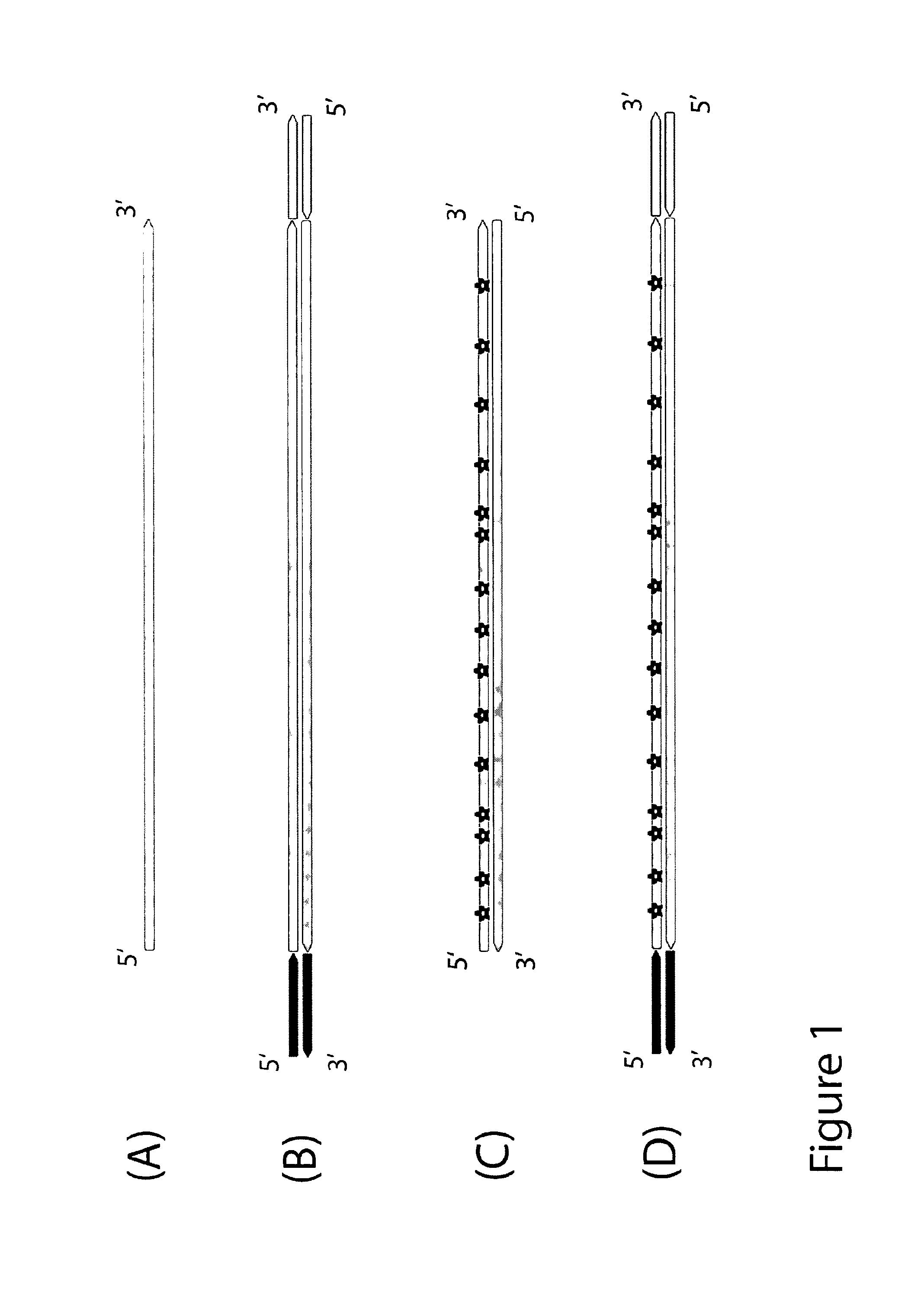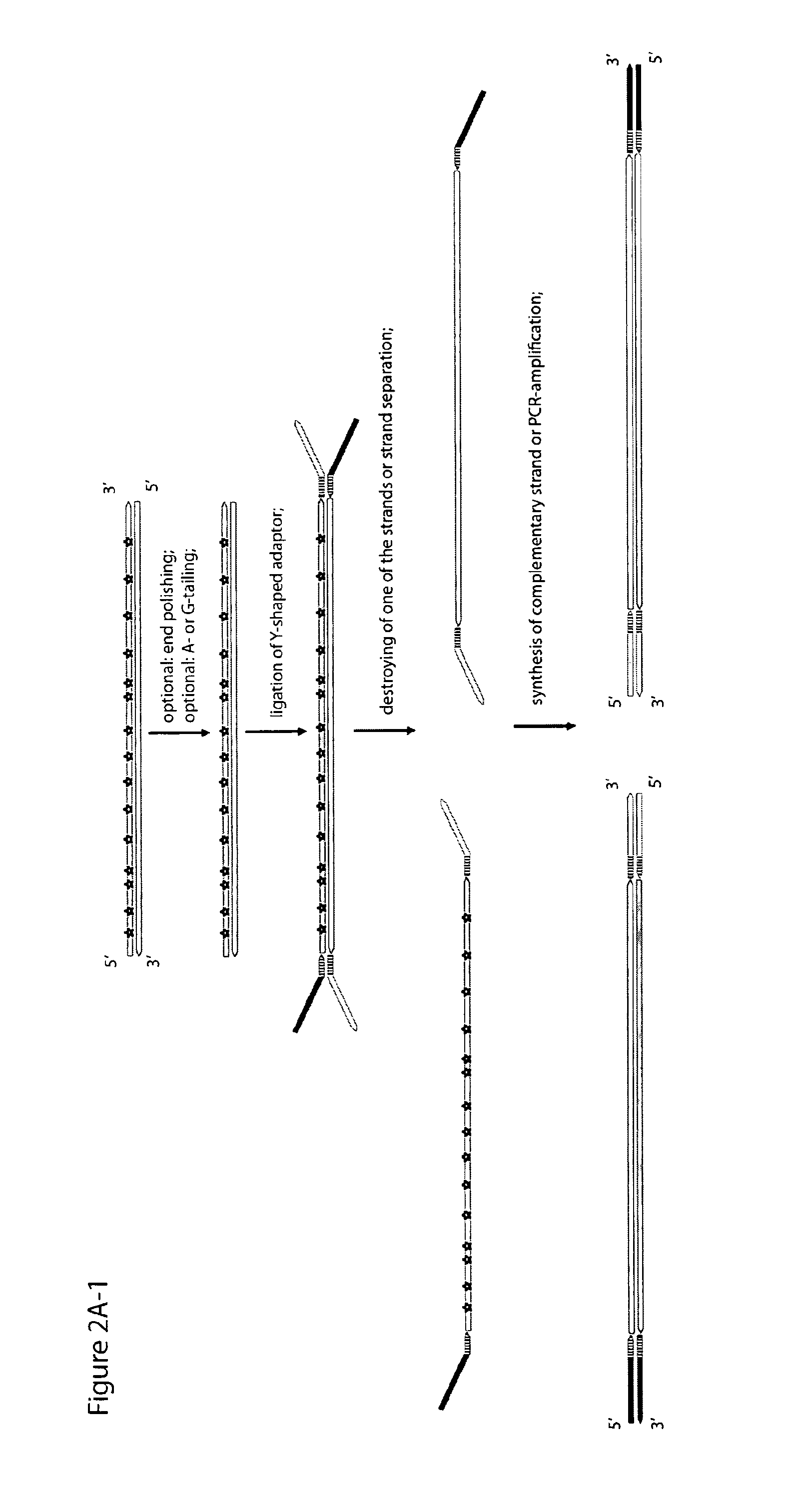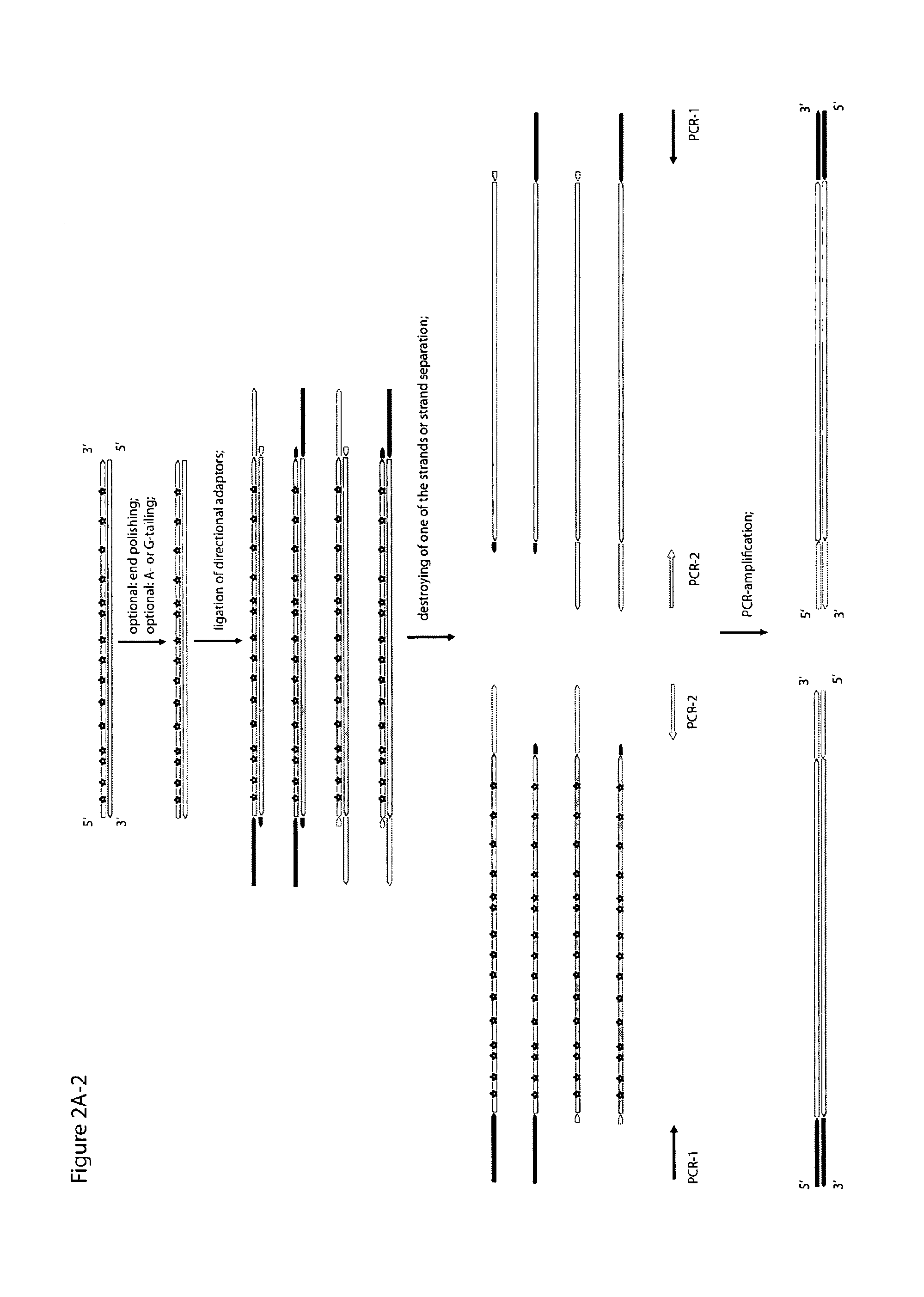Method for differentiation of polynucleotide strands
a polynucleotide and strand technology, applied in the field of polynucleotide strand differentiation, can solve the problems of strand separation where one of the strands is located, the end of the clone preserving directional information, and the efficiency of such operations is normally low
- Summary
- Abstract
- Description
- Claims
- Application Information
AI Technical Summary
Benefits of technology
Problems solved by technology
Method used
Image
Examples
example 1
Transcriptome of Saccharomyces cerevisiae
[0502]In this example an application of the method according to the invention in a preferred embodiment is presented. Strand-specific sequencing of the yeast transcriptome is performed. Subsequently, the sequence of each clone is determined and matched with already existing DNA sequence of the yeast genome.
RNA Isolation:
[0503]Yeast strain BY4741 (MATa; his3Δ1; leu2Δ0; met15Δ0; ura3Δ0) was grown in rich medium (YPD; BD Company) at 30° C. overnight, diluted to an OD600 of 0.15 and grown until reaching an OD600 of 0.87. The cells were harvested by centrifugation at room temperature, washed once with 1×PBS, and frozen in liquid nitrogen. Total RNA was extracted using the RiboPure™-Yeast kit (Ambion) and analyzed by an Agilent 2100 bioanalyzer (Agilent Technologies).
polyA± RNA Purification:
[0504]polyA+ RNA was purified with the Dynabeads mRNA purification kit (Invitrogen) following manufacturer's instructions and treated for 30 min at 37° C. with...
example 2
Transcriptome of the Brain of Mus musculus
[0516]In this example a further application of the method according to the invention is presented. Strand-specific sequencing of the whole mouse brain transcriptome is performed. Subsequently, the sequence of each clone is determined and matched with already existing DNA sequence of the mouse genome. Methods are similar to those used in Example 1. Therefore only steps which differ from Example 1 are indicated.
RNA Isolation:
[0517]Two eleven weeks old female mice (C57B1 / 6J) were dissected and the whole brain was taken for RNA preparation. Total RNA was extracted using the Trizol method.
Data Analysis:
[0518]The resulting sequencing reads were aligned to the M. musculus (UCSC mm9) genomes using modification of Eland software (Gerald module v.1.27, Illumina).
example 3
Comparison of Strand-Specific and Non-Strand-Specific Amplification of Polynucleotides
[0519]To demonstrate that second-strand synthesis with deoxyuridine does not disturb the transcriptional landscape both strand-specific (according to the inventive method) and non-strand-specific transcriptome (RNA-Seq) sequencing for the same RNA sample was performed (mouse liver transcriptome). The resulting scatter plot (FIG. 7A) shows that both RNA-Seq and the inventive method produce identical transcription patterns.
PUM
| Property | Measurement | Unit |
|---|---|---|
| temperatures | aaaaa | aaaaa |
| temperature | aaaaa | aaaaa |
| volume | aaaaa | aaaaa |
Abstract
Description
Claims
Application Information
 Login to View More
Login to View More - R&D
- Intellectual Property
- Life Sciences
- Materials
- Tech Scout
- Unparalleled Data Quality
- Higher Quality Content
- 60% Fewer Hallucinations
Browse by: Latest US Patents, China's latest patents, Technical Efficacy Thesaurus, Application Domain, Technology Topic, Popular Technical Reports.
© 2025 PatSnap. All rights reserved.Legal|Privacy policy|Modern Slavery Act Transparency Statement|Sitemap|About US| Contact US: help@patsnap.com



